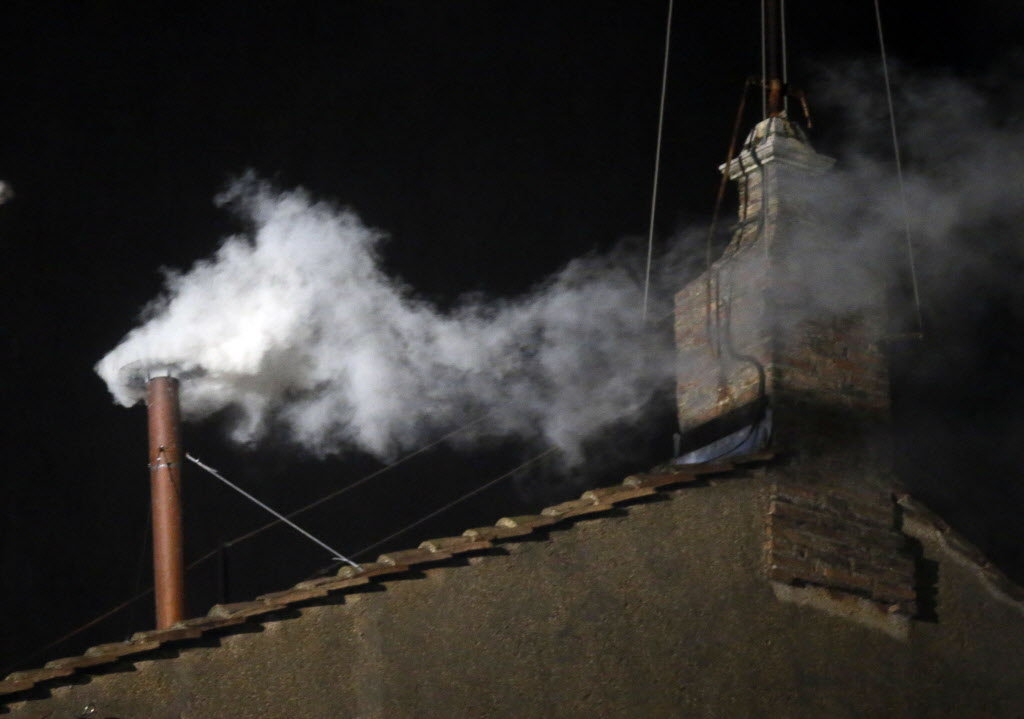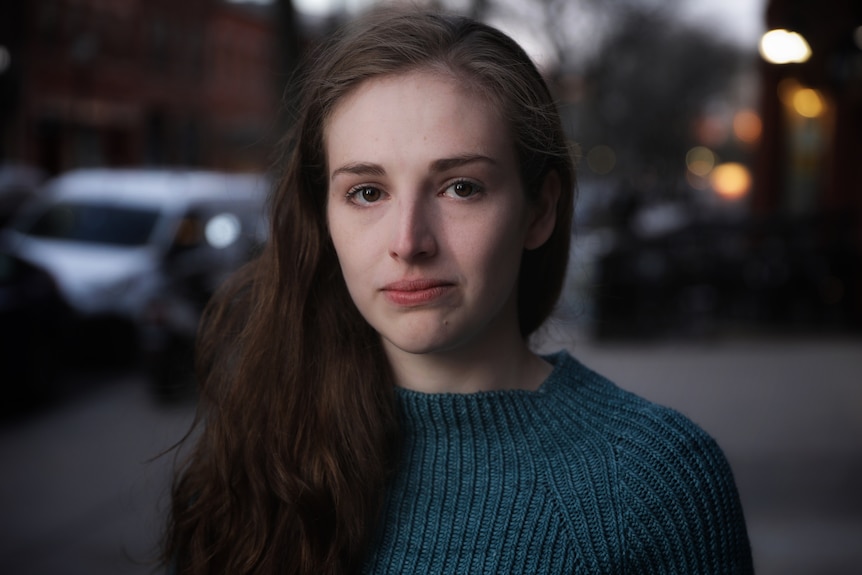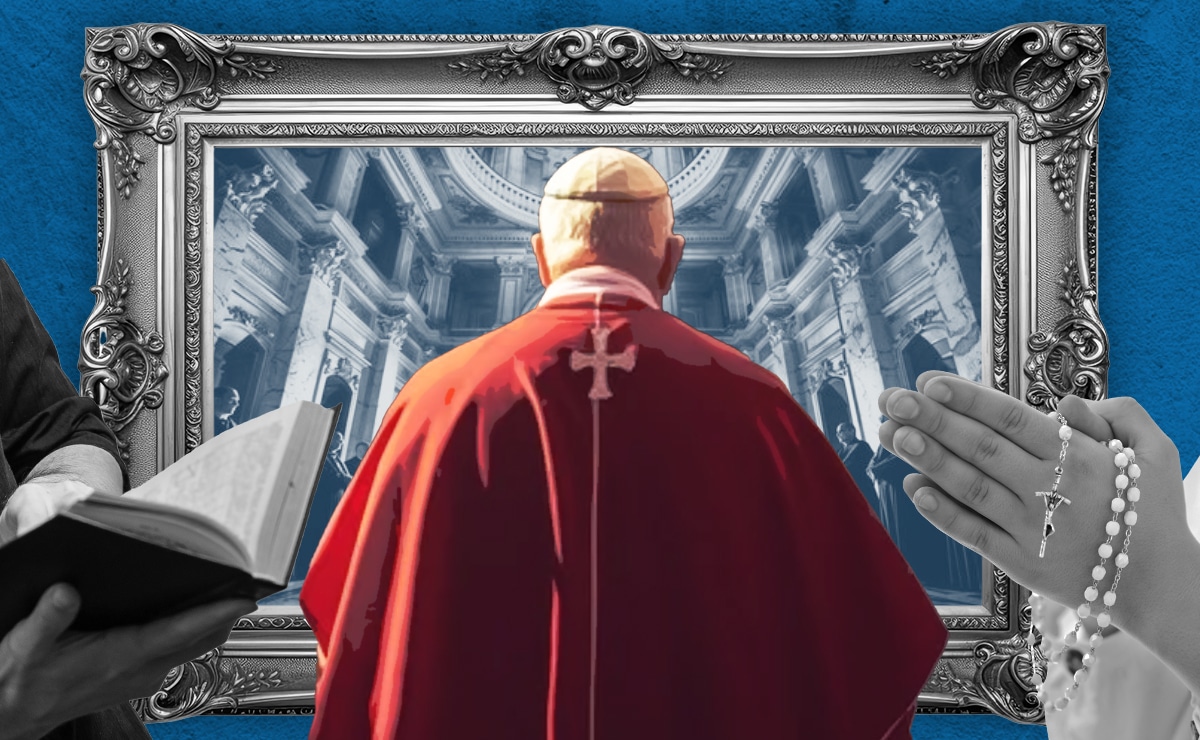The Conclave: A Detailed Look At The Election Of The Pope

Table of Contents
History and Evolution of the Conclave
The selection of the Pope wasn't always the structured process we know today. Early papal elections, often influenced by powerful families and political factions, were frequently marred by corruption and disputes. The process lacked formal rules, leading to prolonged vacancies and even rival Popes. The tumultuous period known as the Great Schism (1378-1417), with multiple claimants to the papacy, highlighted the urgent need for reform.
The formalization of the Conclave, a word derived from the Latin "cum clave" (with key), signifying the locked-room nature of the proceedings, aimed to create a more structured and less corruptible process. The development of Conclave rules and procedures was a gradual process, evolving over centuries in response to challenges and abuses. Key papal bulls and decrees established guidelines regarding the eligibility of electors, voting procedures, and the location of the Conclave.
- Early Papal elections often involved political maneuvering and corruption.
- The Conclave system aimed to create a more structured and less corruptible process.
- Significant changes to Conclave rules occurred after the Great Schism, including the establishment of stricter voting procedures and the limitation of the number of ballots.
Influential Conclaves throughout history, such as the one that elected Pope Gregory VII in 1073, significantly impacted the Church's trajectory. Studying these historical examples provides valuable insights into the political and religious context surrounding papal elections.
The Process of the Papal Conclave
The papal election process, initiated upon the death or resignation of a Pope (sede vacante), is a meticulously orchestrated series of events. Before the Conclave itself, preparatory meetings take place, involving the cardinals' organization and the selection of officials to oversee the process. The cardinals are divided into electors and non-electors, with only the electors participating in the voting.
The Conclave itself takes place in the Sistine Chapel, a location steeped in history and symbolism. The cardinals take an oath of secrecy before entering, promising to maintain confidentiality throughout the proceedings. The voting process involves multiple ballots, using specially prepared ballots and ballot boxes. A two-thirds majority is required to elect a Pope.
- The cardinals take an oath of secrecy before entering the Conclave.
- The voting process involves multiple ballots until a two-thirds majority is achieved.
- Accommodation and daily life of the cardinals during the Conclave are strictly regulated.
- The significance of the white smoke signaling a new Pope is a highly visible and symbolic moment.
The announcement of "Habemus Papam" ("We have a Pope") is a moment of immense significance, marking the culmination of the election process and the beginning of a new papacy. The newly elected Pope then appears on the balcony of St. Peter's Basilica to address the faithful.
The Secrecy and Symbolism of the Conclave
The secrecy surrounding the Conclave is a crucial aspect of its tradition. It prevents external influence and ensures that the cardinals can make their decisions freely, without pressure from political or other interests. This secrecy promotes impartiality and allows for open deliberation among the cardinals.
The rituals and ceremonies associated with the Conclave are rich in symbolism. The burning of the ballots, for example, signifies the ephemeral nature of the election process and the focus on the divine guidance sought in the selection of the new Pope. The location itself – the Sistine Chapel, adorned with Michelangelo's frescoes – adds a layer of profound historical and religious significance.
- Secrecy prevents outside influence and promotes impartial voting.
- The burning of ballots symbolizes the ephemeral nature of the election process.
- The Conclave's location (Sistine Chapel) holds historical and religious weight.
- The Master of Ceremonies plays a vital role in maintaining order and tradition.
Modern Adaptations to the Conclave
While steeped in tradition, the Conclave has also undergone adaptations to meet the challenges of the modern world. The increasing age of some cardinals has led to adjustments in accommodations and procedures, ensuring their comfort and well-being. The introduction of electronic voting systems has streamlined the process, improving efficiency and maintaining secrecy.
- Changes made to accommodate aging cardinals.
- The use of modern technology for voting and communication (e.g., electronic voting).
- Balancing tradition with the demands of the modern world.
The impact of modern media on the perception of the Conclave is undeniable. While maintaining secrecy, the Church must also manage global communication and expectations, using technology to keep the world informed while upholding the sacred nature of the election.
Conclusion
The Conclave, a centuries-old process, remains a captivating and critical event in the Catholic Church. Understanding its history, procedures, and symbolism provides insight into the complex dynamics of papal succession. From its early, often tumultuous beginnings to its modern adaptation, the Conclave continues to shape the future of the Catholic faith. To delve deeper into the fascinating intricacies of this unique election, further research into the history of individual Conclaves and the evolving rules governing the process is highly recommended. Learn more about the fascinating world of the Conclave and its enduring significance.

Featured Posts
-
 Zirkoviy Stil Rianna V Shirokikh Dzhinsakh Ta Bliskuchikh Prikrasakh
May 07, 2025
Zirkoviy Stil Rianna V Shirokikh Dzhinsakh Ta Bliskuchikh Prikrasakh
May 07, 2025 -
 Trumps Evolving Stance On Crypto From Critic To Millionaire
May 07, 2025
Trumps Evolving Stance On Crypto From Critic To Millionaire
May 07, 2025 -
 A Conclave The Process Of Selecting A New Pope
May 07, 2025
A Conclave The Process Of Selecting A New Pope
May 07, 2025 -
 Las Vegas Aces Center Megan Gustafsons Leg Injury Out Indefinitely
May 07, 2025
Las Vegas Aces Center Megan Gustafsons Leg Injury Out Indefinitely
May 07, 2025 -
 Daily Lotto Results Wednesday April 16 2025
May 07, 2025
Daily Lotto Results Wednesday April 16 2025
May 07, 2025
